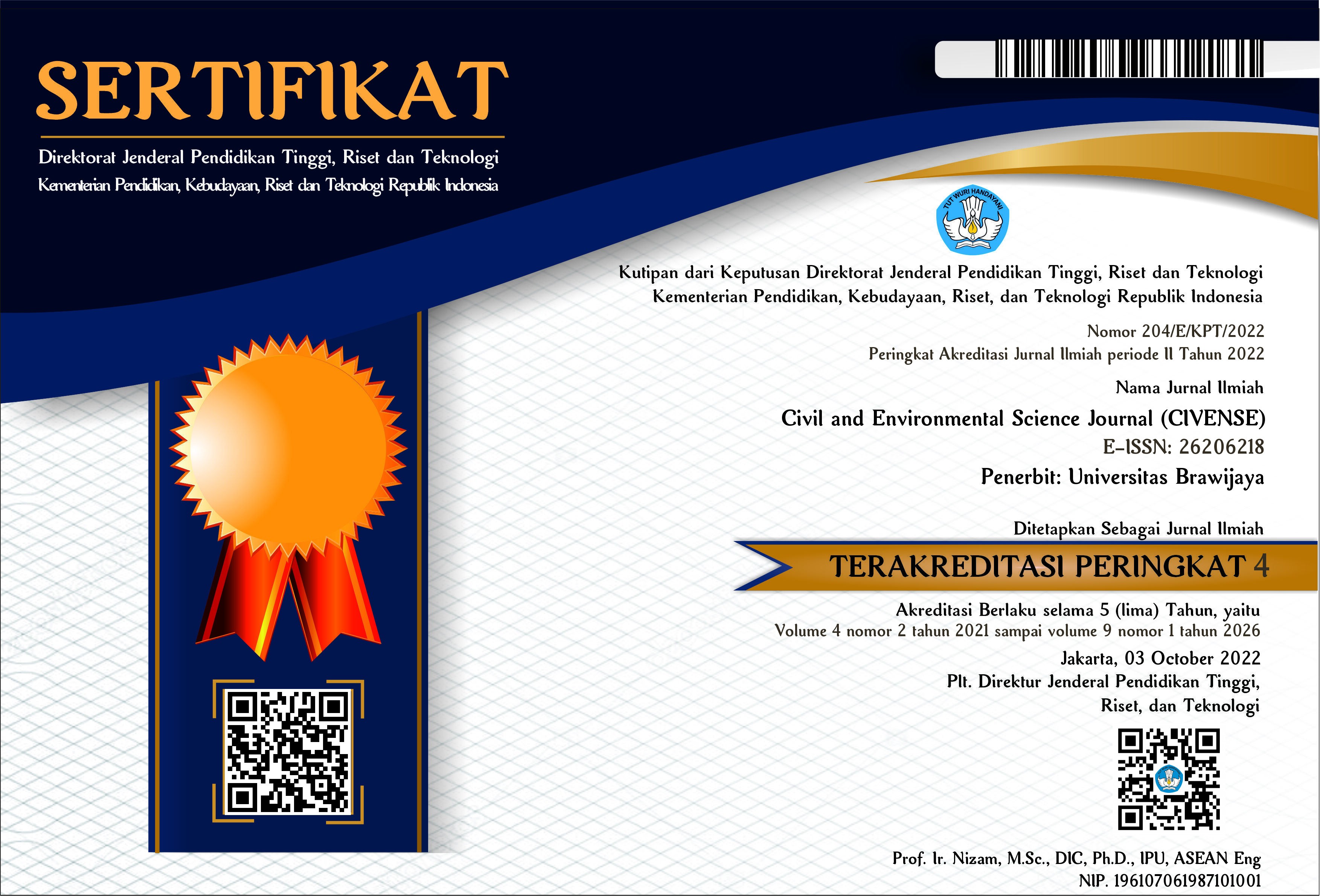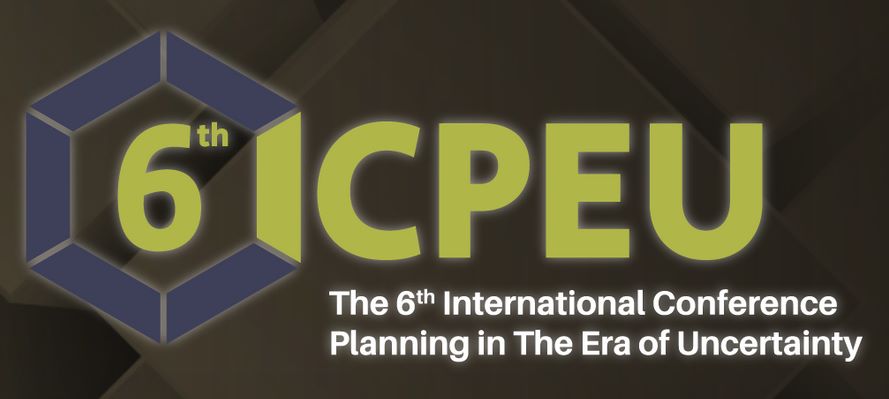Relationship Between Soil Physical Characteristics and Infiltration Rate of The Practice Area of SMK PPN Banjarbaru
DOI:
https://doi.org/10.21776/civense.v6i2.408Keywords:
Infiltration, Infiltration Rate, Soil Physical PropertiesAbstract
The practice area for the Banjarbaru State Agricultural Development Vocational School (SMK PP N Banjarbaru) is located in Kemuning Village, South Banjarbaru District, Banjarbaru City, South Kalimantan Province. Regarding the land use in the research location, the majority is used for plantation land, which is one of the lands suitable for water catchment areas in Banjarbaru City. The Practice Land of PP N Banjarbaru Vocational School is one of the models of good catchment area land from good land use and irrigation systems. Conducted this analyze the infiltration rate and its influence on the physical properties of the soil. From the results of the infiltration test using a double ring infiltrometer which was then analyzed using the Horton method, the most considerable infiltration rate was in open land, namely 33.83 cm/hour, rubber plantations of 22.57 cm/hour, on palawija land it is 15.57 cm/hour and on mahogany land, it is 14.47 cm/hour. From the results of the analysis using the linear regression approach, the physical properties of the soil that can affect the infiltration rate include 16.7% bulk density, 75% permeability, and 90% moisture content. Meanwhile, particle density and porosity only affect 0.7% and 3.5%.
References
Y. S. Bachtiar, D. Harisuseno, and J. S. Fidari, “Prediksi Laju Infiltrasi Berdasarkan Sifat Porositas Tanah, Distribusi Butiran Pasir, dan Lanau,” Jurnal Teknologi dan Rekayasa Sumber Daya Air, vol. 2, no. 1, pp. 156–168, 2022.
D. Indarwati, S. Suhardjono, and D. Harisuseno, “Studi analisis spasial infiltrasi di das kali bodo kabupaten malang,” Jurnal Teknik Pengairan: Journal of Water Resources Engineering, vol. 5, no. 1, pp. 61–67, 2014.
B. Triatmodjo, “Applied hydrology,” Beta Offset, Yogyakarta.[in Indonesian], 2008.
S. Arsyad, “Soil and water conservation,” Bogor.[Indonesian], 2010.
A. Salsabila and I. Nugraheni, Introduction to Hydrology. Bandar Lampung: Raharja’s Main Award, 2020.
R. E. Horton, “An approach toward a physical interpretation of infiltration capacity,” in Soil science Society of America proceedings, 1940, vol. 5, no. 399–417, p. 24.
C. Yunagardasari, A. K. Paloloang, and A. Monde, “Model infiltrasi pada berbagai penggunaan lahan di desa tulo kecamatan dolo kabupaten sigi,” Agrotekbis: E-Jurnal Ilmu Pertanian, vol. 5, no. 3, pp. 315–323, 2017.
A. Andara, “Laju Infiltrasi pada Tegakan Mahoni dan lahan Terbuka di Universitas Hasanuddin,” Skripsi. Fakultas Kehutanan, Unhas, 2018.
D. Rohmat, “Tipikal Kuantitas Infiltrasi Menurut Karakteristik Lahan (Kajian Empirik di DAS Cimanuk Bagian Hulu),” 2009.
J. B. B. Bangun and N. Helda, “Penerapan Metode Horton Dalam Studi Laju Dan Kapasitas Infiltrasi Di Lahan Kampus Universitas Lambung Mangkurat Banjarbaru,” Jurnal Rivet, vol. 2, no. 01, pp. 1–11, 2022.
B. P. Alfiani, “Analisis Sifat Fisika Tanah dan Laju Infiltrasi pada Berbagai Penggunaan Lahan.,” 2019.
Downloads
Published
How to Cite
Issue
Section
License
Copyright (c) 2023 Ulfa Fitriati, Kholiq Malikur Rahman

This work is licensed under a Creative Commons Attribution-NonCommercial 4.0 International License.
Authors who publish with this journal agree to the following terms:
Authors retain copyright and grant the journal right of first publication with the work simultaneously licensed under a Attribution-NonCommercial 4.0 International License that allows others to share the work with an acknowledgement of the work's authorship and initial publication in this journal.
Authors are able to enter into separate, additional contractual arrangements for the non-exclusive distribution of the journal's published version of the work (e.g., post it to an institutional repository or publish it in a book), with an acknowledgement of its initial publication in this journal.
Authors are permitted and encouraged to post their work online (e.g., in institutional repositories or on their website) prior to and during the submission process, as it can lead to productive exchanges, as well as earlier and greater citation of published work (See the Effect of Open Access).














